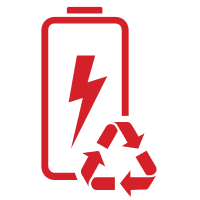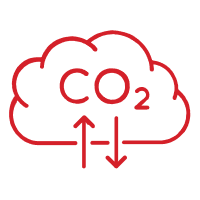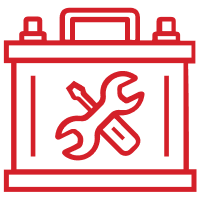Reviving resources: sustainable battery recycling for a greener planet.
At our state-of-the-art Lithium-ion battery (LIB) recycling facility, we’re equipped to operate at a large scale, effectively recovering materials from discarded LIBs and refining them into raw materials. Our approach to recycling LIBs is designed to be chemistry- and form-agnostic, enabling us to meet our commitment to protecting the environment and contributing to a circular economy. We prioritize efficient handling, dismantling, processing, and refining in our recycling process to ensure maximum sustainability.
As electric vehicle adoption continues to grow, we expect to see an increase in the accumulation of discarded end-of-life LIBs, with estimates projecting as much as 4 million tons by 2040. Given that LIBs contain heavy metals and chemicals that can harm the ecosystem if not recycled properly, it’s essential that we act to minimize their negative impact on the environment. Our LIB recycling facility is one such action, and we’re proud to be part of the solution.




Efficient Li-ion battery recycling techniques to reduce environmental impact
-
Mechanical ProcessingOur mechanical processing system begins by discharging and disassembling lithium-ion batteries (LIBs) to recover valuable materials, such as copper, aluminium, black mass, and polyolefin (separator plastic film). The black mass obtained during this process is further refined using a hydrometallurgical process to extract even more valuable materials. By using this approach, we can recover a high percentage of the raw materials in the batteries, reducing the need for new mining and reducing waste in landfills.
-
Hydrometallurgical ProcessingWe use water and solvents to extract valuable materials like graphite and salts from the black mass obtained through our process. These salts are a precursor to critical raw materials used in new Li-ion batteries, promoting a circular economy and reducing the need for new mining.


